Setup Saturday: Get Some Training
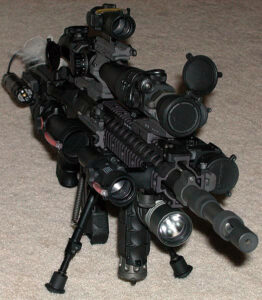 Chasing the Gucci unicorn, it can be as addictive as crack and twice as expensive. If you’ve been on Instagram or any gun gurus social media you know exactly what I’m talking about, the latest and greatest that the firearms industry has to offer. Here is the deal, most (not all) of those people get that gear sent to them for free to show to you so you will rush out and buy it, it is marketing at its core. In reality people have budgets, mortgages, kids, and car payments so how do we decipher what is a must have versus what am I buying because it looks good on the gram.
Chasing the Gucci unicorn, it can be as addictive as crack and twice as expensive. If you’ve been on Instagram or any gun gurus social media you know exactly what I’m talking about, the latest and greatest that the firearms industry has to offer. Here is the deal, most (not all) of those people get that gear sent to them for free to show to you so you will rush out and buy it, it is marketing at its core. In reality people have budgets, mortgages, kids, and car payments so how do we decipher what is a must have versus what am I buying because it looks good on the gram.
Unfortunately, the answer is as varied as each person. My mentor has a saying when asked about a specific piece of gear, “what’s your mission?” Is your mission to carry a gun to protect yourself? Are you in law enforcement looking to setup your new Sam Brown belt? Each person is operating in their own mission and each person has an operational budget for gear. If you are a CEO your operational budget is much greater than mine but is that new wiz bang 6000 necessary for what you do? Or just a way to flex on the poors?
In the past two weeks we have covered carry gun selection as well as belts and holsters. That will get you out in the world as an armed citizen. Extra credit if you booked a class to learn how to fight with that weapon. But what comes next? I see too many people looking for the NEXT gun or the NEXT mod they can have done. There is nothing wrong with that if it is being done with purpose and not just because you liked how your salesman’s gun looked.
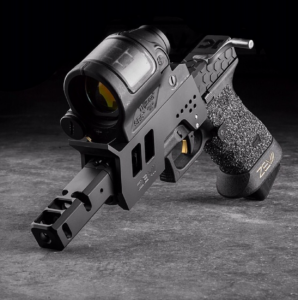 I’ve been behind that counter, trust me, most of the time we are crying inside when you start talking about stipple patterns, lightening cuts, triggers, and dots. Learn to shoot what you have now, the way it is right now. I understand that we all want nice things, we work hard to buy things that will last and that will work. In today’s disposable world it can sometimes be hard to come by. I also understand that I will recommend things that are considered “Gucci” just ask my friends. There is, however, a difference between buying a quality flashlight once vs adding a red dot to your gun without having first mastered the irons.
I’ve been behind that counter, trust me, most of the time we are crying inside when you start talking about stipple patterns, lightening cuts, triggers, and dots. Learn to shoot what you have now, the way it is right now. I understand that we all want nice things, we work hard to buy things that will last and that will work. In today’s disposable world it can sometimes be hard to come by. I also understand that I will recommend things that are considered “Gucci” just ask my friends. There is, however, a difference between buying a quality flashlight once vs adding a red dot to your gun without having first mastered the irons.
I’ve done a full Gucci Glock from the ground up, rmr, comp, trigger, all of it. Do I still have it? Nope. What do I run now? A stock gen 3 Glock 19. What I found is all that fancy techno wizardry added up to me being just as fast as irons, at traditional gun fight distances. Is there a place and purpose? Absolutely, it just wasn’t for what I do.
Stop idolizing the Instagram warriors, the YouTube gunslingers, and the new new in the industry. There is only one mod you can buy that will make you better, faster, and more accurate and that is training, go get some and I promise, the world of gear will become more clear.

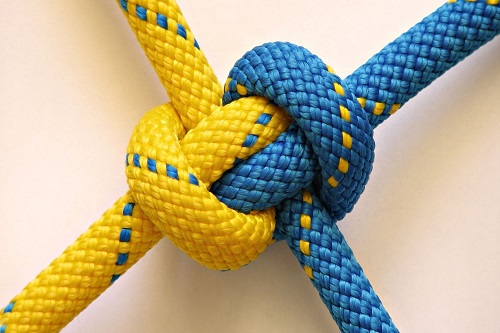
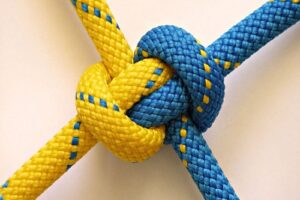 SO, it’s Friday and I haven’t posted anything this week for mindset Monday or Tuesday training tip. Well I apologize for that but I have doing some
SO, it’s Friday and I haven’t posted anything this week for mindset Monday or Tuesday training tip. Well I apologize for that but I have doing some 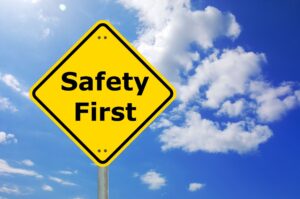 Lets talk about what I think the first and most important thing to look at when finding a firearms instructor, safety. When looking at an instructor one of the first things to look for is have there been any accidents in their classes? If you can’t find anything online about anything call and ask them. If they are a good instructor they should be able to say no OR if there has been, they should be able to tell you that why it happened, how any damage or injury was mitigated, and what they have done since to make sure that it doesn’t happen again. Next ask them what their safety S.O.P (Standard Operating Procedure) is. They should be able to tell you about what their process is if there is an accident or injury. They should be able to tell you about any medical training that they have gone through. Finely they should tell you about the medical and first aid gear that they have with them on the range at all times. Things to look for are tourniquets, chest seals, quick clot gauze, or at the very least kerlex rolled gauze, compression bandages and/or coflex dressing, as well as basic first aid things like band-aids etc.
Lets talk about what I think the first and most important thing to look at when finding a firearms instructor, safety. When looking at an instructor one of the first things to look for is have there been any accidents in their classes? If you can’t find anything online about anything call and ask them. If they are a good instructor they should be able to say no OR if there has been, they should be able to tell you that why it happened, how any damage or injury was mitigated, and what they have done since to make sure that it doesn’t happen again. Next ask them what their safety S.O.P (Standard Operating Procedure) is. They should be able to tell you about what their process is if there is an accident or injury. They should be able to tell you about any medical training that they have gone through. Finely they should tell you about the medical and first aid gear that they have with them on the range at all times. Things to look for are tourniquets, chest seals, quick clot gauze, or at the very least kerlex rolled gauze, compression bandages and/or coflex dressing, as well as basic first aid things like band-aids etc.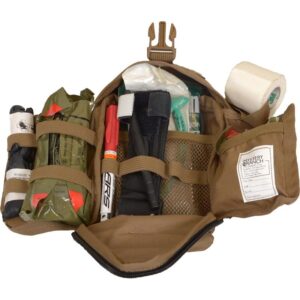 After safety, I think that the next important thing to look at is the type of training they do. Are they an instructor that says that you going to burn through 1000 rounds of ammo in a one day class? Or on the reverse, are they telling you that you are going to learn how be a SWAT team member with 50 rounds. The fact right now is that ammo is at a premium so most of us (myself included) are going to have a hard time parting with any of our ammo, and I think that if they tell you need that many rounds for a one day class then there is a good chance that you are going to be throwing rounds downrange with little actual training value. That being said you can only learn so much from non live fire training. As with anything and even more important in shooting, you HAVE to actually shoot your firearm so that you can verify and improve on the non live fire stuff. Ask them about the course of fire for the class, what types of drills they are going to be doing, and how each drill correlates to the type of class that you want to take. A good instructor should be able to tell you how every round you fire will help you improve.
After safety, I think that the next important thing to look at is the type of training they do. Are they an instructor that says that you going to burn through 1000 rounds of ammo in a one day class? Or on the reverse, are they telling you that you are going to learn how be a SWAT team member with 50 rounds. The fact right now is that ammo is at a premium so most of us (myself included) are going to have a hard time parting with any of our ammo, and I think that if they tell you need that many rounds for a one day class then there is a good chance that you are going to be throwing rounds downrange with little actual training value. That being said you can only learn so much from non live fire training. As with anything and even more important in shooting, you HAVE to actually shoot your firearm so that you can verify and improve on the non live fire stuff. Ask them about the course of fire for the class, what types of drills they are going to be doing, and how each drill correlates to the type of class that you want to take. A good instructor should be able to tell you how every round you fire will help you improve. Now to why this week has been a little different. This week I did some training through
Now to why this week has been a little different. This week I did some training through 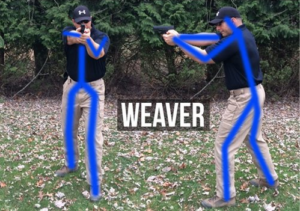 The first is the Weaver stance. this stance was developed in the late 1950’s by competition shooter and L.A. county deputy, Jack Weaver. There are a couple different tales on how this stance developed but, the short versions are that it was either that he was competing in quick draw competitions and wanted a way to draw and use sighted fire as quickly as possible. The other is that there was a match coming up and he had an injury that prevented him from fully extending his support (or non firing) arm. Either way because of his success in matches this became the “standard” shooting platform for civilians, and law enforcement alike. This stance is characterized by the following.
The first is the Weaver stance. this stance was developed in the late 1950’s by competition shooter and L.A. county deputy, Jack Weaver. There are a couple different tales on how this stance developed but, the short versions are that it was either that he was competing in quick draw competitions and wanted a way to draw and use sighted fire as quickly as possible. The other is that there was a match coming up and he had an injury that prevented him from fully extending his support (or non firing) arm. Either way because of his success in matches this became the “standard” shooting platform for civilians, and law enforcement alike. This stance is characterized by the following. The next stance is the isosceles stance. This stance is the most commonly taught to new shooters. This is because many argue that it mimics the body’s natural reaction posture that will happen in a defensive situation. Like the Weaver stance this stance became popular when in the 1980’s Brian Enos, and Rob Leatham began using it to win
The next stance is the isosceles stance. This stance is the most commonly taught to new shooters. This is because many argue that it mimics the body’s natural reaction posture that will happen in a defensive situation. Like the Weaver stance this stance became popular when in the 1980’s Brian Enos, and Rob Leatham began using it to win 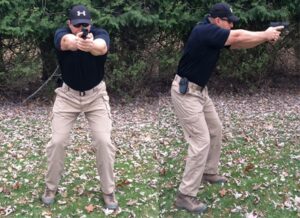 This final stance can be called by many names; fighting, boxer, tactical, modified isosceles, etc. I call it a “fighting” stance and it is the one that I use and teach in my
This final stance can be called by many names; fighting, boxer, tactical, modified isosceles, etc. I call it a “fighting” stance and it is the one that I use and teach in my 

Recent Comments